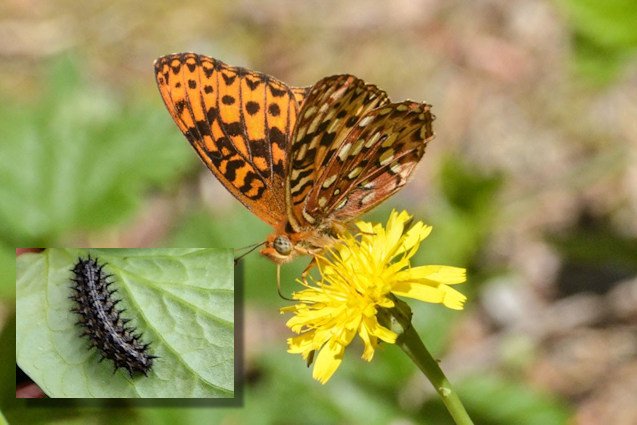Zoo releases hundreds of endangered Oregon silverspot butterfly caterpillars on the coast

PORTLAND, Ore. (KTVZ) — In a breezy coastal meadow this week, Oregon Zoo conservationists and their partners said goodbye to 381 of the zoo’s tiniest residents.
They were releasing Oregon silverspot butterfly larvae at select sites in the coastal mountain range in an effort to save this beautiful and threatened Northwest species, which has been listed under the federal Endangered Species Act since 1980.
Once common in coastal grasslands from Northern California up into British Columbia, the silverspot remains today in just a handful of isolated populations — three of them along the Oregon Coast.
“If it weren’t for the recovery program, three of the remaining silverspot populations would probably be extinct,” said Travis Koons, who oversees the zoo’s butterfly conservation efforts.
Each summer, a small number of female silverspots are collected by field biologists and brought to the zoo to lay eggs. The eggs hatch into tiny caterpillars, which are kept safe during their winter dormancy. In the spring, they wake up to a leafy meal and grow quickly. When the time is right, the zoo and its conservation partners transport the silverspots to field sites for release.
The caterpillars going out this week represent the first of five releases scheduled this year, Koons said. From now through July, nearly 2,000 Oregon Zoo–reared silverspots will be transported to field sites to bolster the remaining populations.
Conservationists have also been working to establish a new population at Saddle Mountain, where the silverspot had not been seen since 1972. The area was added as a reintroduction site in 2018 because a rare flower — the early blue violet — blooms in abundance there.
To see video from last year’s release at Saddle Mountain, go to bit.ly/SilverspotRelease.
Early blue violets are the main food source for the silverspot caterpillars as they mature into adult butterflies, and the Oregon coastal range is one of the few remaining areas where these flowers grow in large enough quantities to sustain a butterfly population. Elsewhere, the delicate flowers have been choked out by invasive weeds and forest succession.
“The Oregon silverspots have lost a lot of ground,” Koons said. “But if we continue to restore and protect their habitat, we can give them a chance to survive.”
The zoo’s recovery efforts are conducted in partnership with the Oregon Parks and Recreation Department, the U.S. Fish and Wildlife Service and Seattle’s Woodland Park Zoo.